Ixalan prerelease starts in a few short days. Folks are going to play with one of the most fun assemblages of creature types in a long, long time. I’m stoked to play with new cards on Saturday, but I can’t stop thinking about Explore. It’s a mechanic that’s incredibly simple on its face—it’s only relevant immediately when played—but how to properly evaluate and play it seems anything but straightforward.
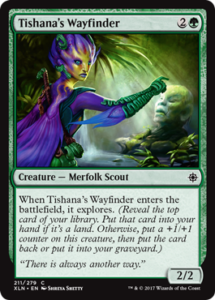
Two Good Outcomes
Tishana’s Wayfinder is a fine card no matter what you get—either a Nessian Courser with Scry 1, or Civic Wayfinder which gets you a random land. Both of those outcomes are great. It’s strictly better than a 2/2 for three mana with scry 1, since you either draw a card or get a counter.
The problem I have with evaluating both this card, and Explore in general, is that you have no choice in what you get. If Tishana’s Wayfinder were a split card where you could choose between Nessian Courser and the creature side of Nissa, Vastwood Seer, it’d be incredibly good. If it were a Tribute 1 creature that gave your opponent the choice, it’d be a Gray Ogre with marginal upside. Explore fits right in the middle, since it gives you a random outcome. Sure, you can manipulate the top of your deck with scry (which isn’t very easy to do and effectively increases the cost of the card by having you jump through a hoop), and sure you can have a sense of the odds (with a 60/40 split between lands and spells, you’re more likely than not to get the counter). But because you can’t depend on the card doing what you need it to do at the moment, it’s worse than it looks.
But you’re always getting better value than Scry 1, and Scry 1 stapled to a creature is already good!
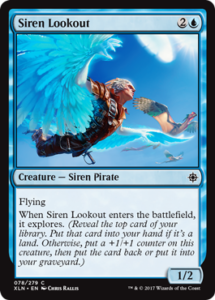
High or Dry
Let’s consider another example. Siren Lookout. It’s an Explore card with one of the bigger differences in power between its two potential forms.
Imagine that it’s turn three, you’re on the play, and you have Siren Lookout and Sailor of Means in hand. Your opponent has Bishop’s Soldier on the battlefield. What do you play?
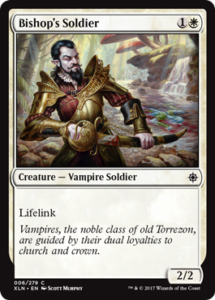
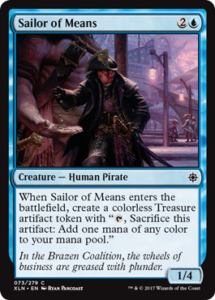
Assuming you don’t need to hit a land drop/treasure or have an artifact, what do you play? You’ve got three choices:
- Have a Chapel Geist. This blanks your opponent’s creature and is a solid attacker.
- Have a Merfolk Wayfinder. It’s good at triggering Raid, but not a very strong body. Your opponent gets a four-point life swing.
- Have a Horned Turtle with upside. It blunts your opponent’s offense, but they still get a two-point life swing.
You can either go with the safe, middle-of-the-road choice number three, or you can flip a slightly weighted coin and try for one. Games can be won or lost because of these coin flips—choose right and you have an undercosted beater and curve out beautifully, choose wrong and you have an inefficient creature (that yes, drew you a card) while a more efficient creature is stuck in your hand and now off-curve.
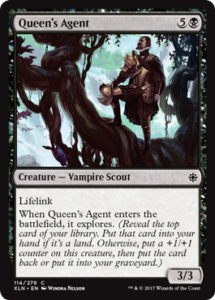
Queen`s Agent exists on the other side of the cost spectrum, but has the same problem. If it were always a 4/4 Lifelink with Scry 1, it’d be a solid curve topper that can stabilize you when you’re behind (and dodges a fair amount of removal). But when you hit a land and get a 3/3 for 6 that draws you a (likely useless) land, it’s really inefficient (and in range of substantially more removal). There’s a big disparity in power level between the creature having that counter and lacking it.
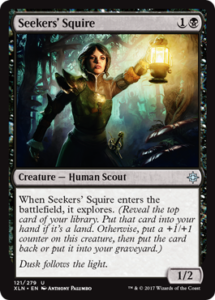
Seekers’ Squire, like Tishana’s Wayfinder and Merfolk Branchwalker, is powerful because both outcomes are good and neither is substantially more powerful than the other. Either you get an Elvish Visionary with extra toughness or an Elvish Warrior that scries. Both are solid and comparable outcomes at all stages of the game. When an ability like Lifelink or Flying is involved, as is the case with Siren Lookout and Queen`s Agent, the value of that +1/+1 counter is magnified, tipping the scales so that one half of the card is likely substantially more powerful and desirable than the other.
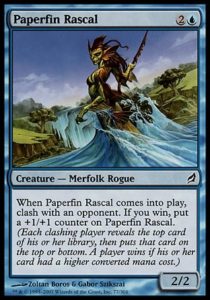
Explore is very reminiscent of Clash. Sure, it’s strictly better—it doesn’t help your opponent and it’s always better value than Scry 1—but games can be won or lost based on the coin flip of the top of your deck. Moreover, having more power hinging on a random outcome increases the effect of the variance. Even though both outcomes are better individually, the difference between the two could be even greater than the value you were getting from clash cards.
We’ve also seen a lot of Magic design around variance lately. Sure, Magic is a game that works so well because of the randomness of a shuffled deck. Variance allows skillful play across different skill levels and prevents the game from being repetitive. However, it’s dangerous when powerful, tournament-defining cards like Collected Company and Aetherworks Marvel are discounted because they’re inconsistent. Now, Explore certainly isn’t as powerful as those cards, but games of Limited could well be won or lost based on whether someone won a coin flip and got a 2/3 Flying on or a 1/2 Flying on turn three.
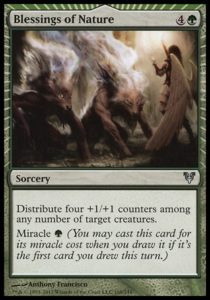
Fortunately for all of us, we get to play with Explore cards this weekend. I’m delighted that Wizards managed to pack so much into a straightforward, lenticular mechanic. Explore offers an easier choice to players than Scry 1 (since you don’t have to think about what to do with lands), while it offers a more difficult choice to experienced players (how do you sequence your Explore cards?). Here’s looking forward to finding out just how good it is.
And, as always, thanks for reading.
—Zachary Barash
Zachary Barash is a New York City-based game designer. He works for Kingdom Death: Monster, has an MFA in Game Design from NYU, and does freelance game design.
His favorite card of the month is Censor. Every component of Censor is weak (neither U: Draw a card, nor two mana Force Spike for two mana is good), but put together it’s not only a formidable and flexible spell, it creates a powerful moment when you get someone with it. A Counterspell always hits its mark, but a Censor demands that you time it just right, that your opponent doesn’t see it coming or can’t help but play into it. And because actually countering a spell with it requires so much precision, the cycling cost is basically negligible, making it good (but rarely great) at every stage of the game. Compare it with the also-cool, bigger version in Countervailing Winds, which is also its own nifty design and another callback to powerful countermagic of old.

